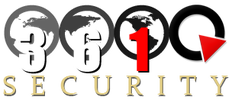Country Profile: Myanmar (Burma)
|
Executive Summary
Burma, known alternatively as Myanmar, is a state mired in a history of political isolation. This lack of dialogue between the civilian population and the government led to a series of oppressive leaders under the cloak of the state’s military. Although multiple political groups and more hostile terror organizations operate in Burma on the principle of securing ethnic representation or deposing the given leadership, efforts to reform the political realm in recent years have halted much of this aggression. Brief History
The area now known as Burma was formerly an amalgam of smaller city-states and kingdoms made up of ethnic minorities. For the majority of the 19th century, Burma was enveloped into the expanding Indian Empire of Great Britain. It was not until 1937 that Burma became a self-governing region, separate from its prior Indian provincial status. Just over a decade later, Burma claimed its full independence. A period a governance under General Ne Win ensued beginning in 1962 that saw a transition of his leadership status from military ruler, to self-appointed president, and to then essentially that of a political kingpin. After a military coup in 1988 ousted Ne Win, the ruling junta essentially neutralized the outcome of legislative elections two years later by placing the ruler of the opposition under house arrest. It would not be until May 1998 that another open vote would be held in the state, in this instance a constitutional referendum. Political Structure
Economic Structure
Social Structure
Religion:
Churches:
|
Ethnicity:
Gender:
Urbanization:
|
Operating Organizations
Political Groups:
Political Groups:
- Thai border: Ethnic Nationalities Council (ENC), Federation of Trade Unions-Burma (FTUB) (exile trade union and labor advocates), National Coalition Government of the Union of Burma (NCGUB) (self-proclaimed government in exile) consists of individuals, some legitimately elected to the People's Assembly in 1990 (the group fled to a border area and joined insurgents in December 1990 to form a parallel government in exile); National Council-Union of Burma (NCUB) (exile coalition of opposition groups)
- Inside Burma: Kachin Independence Organization (KIO); Karen National Union (KNU); Karenni National People's Party (KNPP); United Wa State Army( UWSA); 88 Generation Students (pro-democracy movement); several other Chin, Karen, Mon, and Shan factions
- Note: freedom of expression has been highly restricted in Burma; the restrictions are being relaxed by the government; political groups, other than parties approved by the government, are limited in number
- Terrorist, Criminal Etc: As the world’s second largest producer of illicit opium, Burma is a substantial participant in the transnational drug trade. Terrorist organizations operating in the state include the Democratic Karen Buddhist Army (DKBA), the Kayin National Union (KNU), and the National Democratic Front of Bodoland (NDFB).
Allies and Enemies
Country Trajectory
Underfunded sectors of the economy desperately need investment, from foreign sources or otherwise, in order to stimulate economic growth for the vast majority of the Burmese populace. Yet, signs of increased political openness with parliamentary debate are manifesting in the state that could lead to improved allocation of financial resources. Certain ethnic groups that were a source of violence in the region are entering preliminary peace agreements under political reforms under the newest civilian leadership. While this may be indicative of a more confident rule of law, Burma still must address members of its populace economically disaffected by years of negligence by the ruling class.
Underfunded sectors of the economy desperately need investment, from foreign sources or otherwise, in order to stimulate economic growth for the vast majority of the Burmese populace. Yet, signs of increased political openness with parliamentary debate are manifesting in the state that could lead to improved allocation of financial resources. Certain ethnic groups that were a source of violence in the region are entering preliminary peace agreements under political reforms under the newest civilian leadership. While this may be indicative of a more confident rule of law, Burma still must address members of its populace economically disaffected by years of negligence by the ruling class.
Current Events
http://www.nytimes.com/2013/03/08/world/asia/myanmar-reforms-could-falter-un-investigator-says.html?_r=0
http://www.gulf-times.com/asean-philippines/188/details/344979/suu-kyi-re-elected-as-myanmar-opposition-leader
- Mar. 7th, 2013: Political reforms that are delivering greater freedom in Myanmar could falter if the authorities do not tackle some conspicuous failings, including continuing torture in prisons and discrimination against ethnic minorities, a United Nations investigator, Tomás Ojea Quintana, said in a report. Despite the progress of reforms, Quintana claims “there remains a large gap between reform at the top and implementation on the ground.”
http://www.nytimes.com/2013/03/08/world/asia/myanmar-reforms-could-falter-un-investigator-says.html?_r=0
- Mar. 10th, 2013: Aung San Suu Kyi was re-elected as Myanmar opposition chief at a landmark congress that disappointed some members hoping for new blood in the wider leadership ahead of a key 2015 election. Hundreds of National League for Democracy (NLD) members gathered in Yangon for their first national conference—a display of political strength that would have been unthinkable under the former junta. The meeting highlighted the myriad challenges facing the hugely popular opposition, including its lack of experience as well as party infighting.
http://www.gulf-times.com/asean-philippines/188/details/344979/suu-kyi-re-elected-as-myanmar-opposition-leader
Sources
- http://web.archive.org/web/20071027120750/http://www.religiousintelligence.co.uk/country/?CountryID=41
- http://www.wnd.com/2002/01/12391/
- http://www.start.umd.edu/start/data_collections/tops/terrorist_organizations_by_country.asp?id=BM
- http://www.nytimes.com/2013/03/08/world/asia/myanmar-reforms-could-falter-un-investigator-says.html?_r=0
- http://www.gulf-times.com/asean-philippines/188/details/344979/suu-kyi-re-elected-as-myanmar-opposition-leader
- https://www.cia.gov/library/publications/the-world-factbook/geos/bm.html
